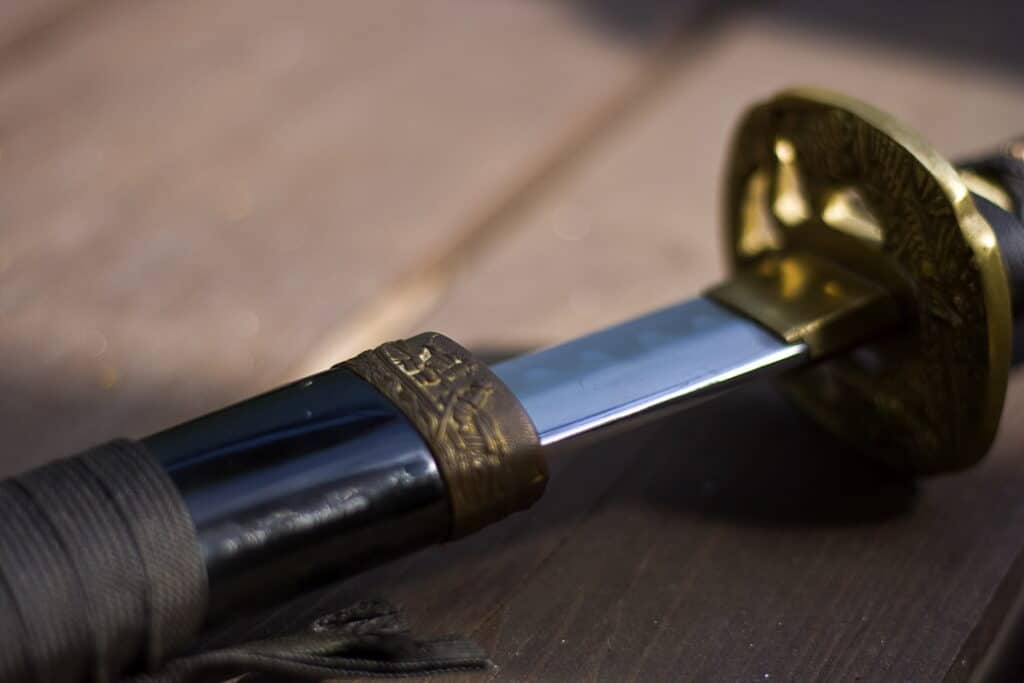
The nodachi is a very brutal weapon. This article covers all the features of this historic weapon:
The nodachi/ōdachi is a Japanese sword with a total length of 150 cm (59 in) and a weight of 2.2 kg (4.9 lbs). The nodachi was mainly used in the 15th century. It has a curved blade and is a feared anti-cavalry weapon. Nodachi translates to “field sword” and can be used interchangeably with ōdachi.
In the course of this article, you will get to know all the features of this Japanese sword in more detail.
Table of Contents
Nodachi Blade
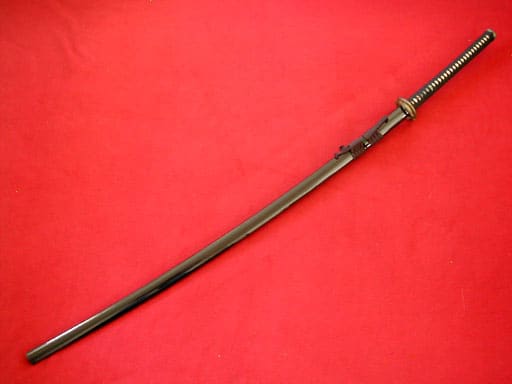
The blade of a nodachi is very long and heavy and thus enables delivering heavy blows to your opponent.
You can easily see the strong curvature of such a sword with your bare eyes.
Ōdachi were almost always differentially hardened. Furthermore, most of them feature a bo-hi in order to reduce the weight of the blade.
Length of a Nodachi
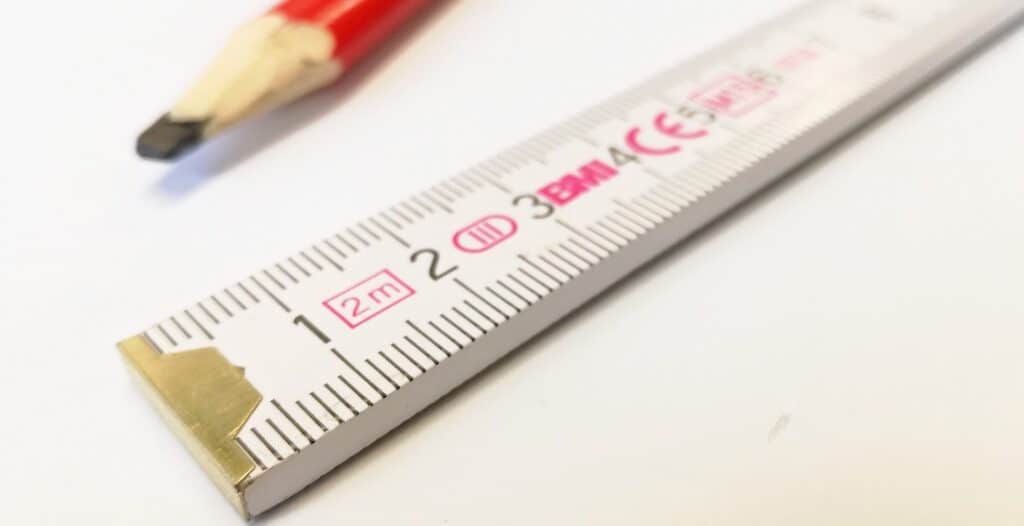
The blade length of a nodachi is at least 3 shaku (90 cm/35.8 in). A typical ōdachi (blade + handle) measures around 150 cm (59 in). Whereof the tsuka (hilt) has a length of roughly 30 cm (12 inches).
This makes it the longest type of Japanese sword. Due to the enormous length of the blade, it was very expensive and complicated to craft such a sword.
For one heat treatment gets rather complex. Moreover, this type of sword seldom fitted common quenching mediums. Thirdly, it was impractical to polish a sword of this size.
That’s enough talk about the size of the nodachi let’s move on to its weight.
Weight of a Nodachi
A regular nodachi with a length of 150 cm (59″) weighs approximately 2.2 kg (4.9 lbs). In contrast, a katana only weighs 1.2 kg (2.6 lbs).
This huge difference in weight makes blocking a nodachi strike with a katana completely pointless, as the enormous force would blow your katana away.
Nodachi Usage
The sheer size of the ōdachi allows for completely different use-cases than a katana.
On the one hand, horsemen could use this sword against cavalry as it offers various advantages over spears, lances and regular swords (long reach, increased weight and more slashing area).
So in this regard, you can probably compare it with a Chinese Zhanmadao.
On the other hand, the nodachi was mainly used by Japanese foot soldiers. Although the effectiveness of this weapon when fighting infantry is controversial it definitely excels as an anti-cavalry weapon.
A common foot soldier could make use of this weapon to dispose of attacking cavalry units by slicing their horses. For this reason, it was feared amongst mounted troops as an overpowered weapon.
Fighting with this sword involved relying primarily on heavy downward chops. Altogether the ōdachi’s usage is completely different than that of the other Japanese swords.
In an infantry battle, this weapon type offers various advantages and disadvantages which we will explore in detail later on.
We now discussed the usage of the nodachi in a battle, but let me also show you how this weapon was used/worn when marching.
How to wear a Nodachi?
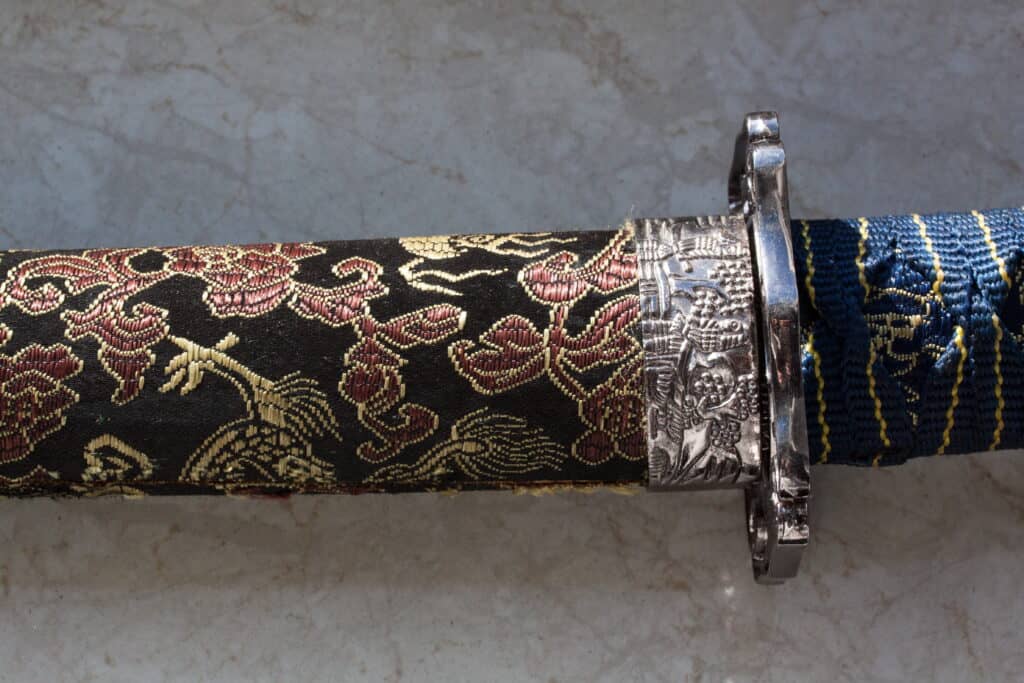
It should be obvious that it is completely impossible to carry such a huge weapon around your waist.
As the sword is so large you would severely decrease your agility and thus regularly bump into other soldiers or objects. So there are three main ways to wear a nodachi.
Firstly you can mount it on your back. The only problem is that this makes drawing the sword impossible.
Another option is to carry the sword in your hand. This might tire you down pre-battle but definitely allows you to quickly unsheathe your sword.
The third possibility is to have a follower carry it for you. During the Muromachi era, it was common practice for a samurai to have such a follower with him, to assist in carrying his weapons or at least help drawing them.
Invention and History of the Nodachi
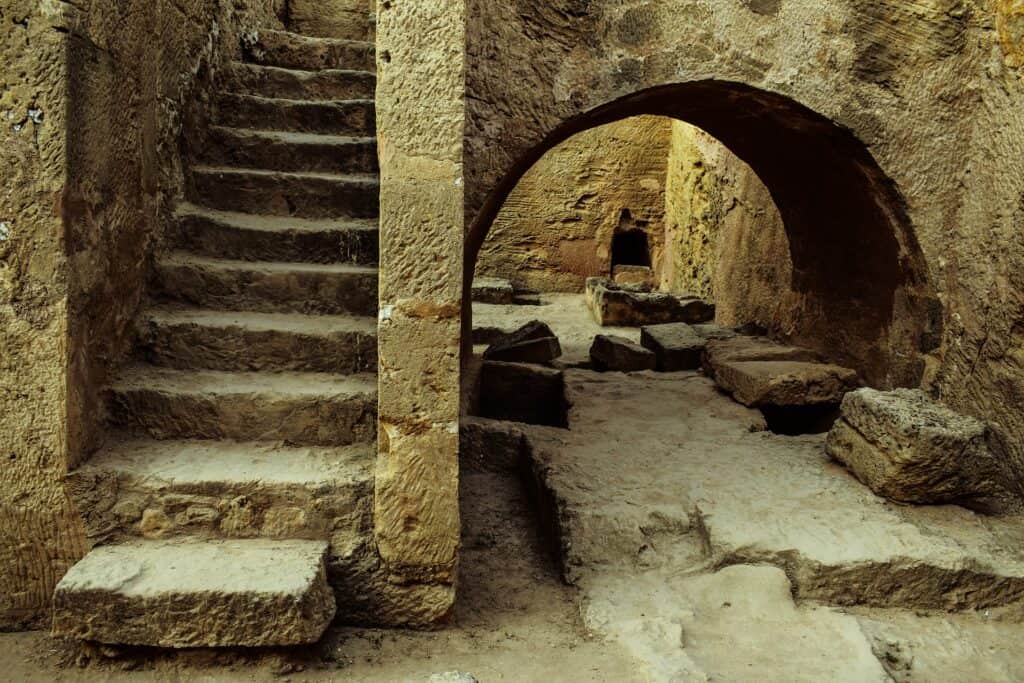
The first nodachi was forged in the 5th century AD. This was verified when one 120 cm long and one 140 cm long sword were unearthed in Japan and could be dated back to that period.
In the 15th century, the ōdachi became extremely popular as an anti-cavalry weapon.
In the early 17th century the usage of this sword rapidly declined. This was due to the Shogun enacting a law that prohibited the possession of swords over a given length.
For this reason, most nodachi were cut to the shorter legal size. The other nodachi were delivered as offerings to shrines.
Pros of the Nodachi
I’ve already mentioned the most important advantage of the nodachi. One’s opponents just aren’t able to block strikes from such a monstrous sword.
The tremendous weight and power of such a blow will throw their weapon out of their hands.
When wielding a ōdachi you almost always have the range advantage. An enemy with a katana would have to come really close in order to hit you.
Last but definitely not least, this weapon excels at fighting cavalry units.
Cons of the Nodachi
Due to the nodachi’s length, the weapon is inflexible and not very agile. It is completely useless when fighting inside a building or in close-quarters. A katana is way better suited for quick combat.
Missing a blow with a ōdachi could be a fatal error as the recovery period is rather high. During this time the attacker is extremely vulnerable to enemy counterattacks.
As mentioned before using a nodachi requires a completely distinct fighting style. Your skills wielding a katana won’t help you master this weapon at all!
A nodachi is a blade heavy weapon. Hence doing a lot of strikes tires you quickly. For this reason, you would want the fight to be over as soon as possible.
These were all the pros and cons of the ōdachi I could think of. This list doesn’t prove that a nodachi is a better weapon than a katana of course.
It just offers a different use case and fighting style, but in the end, it comes down to preference and the skill of the swordsman.